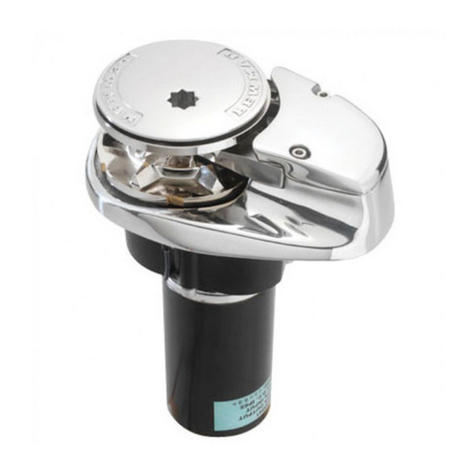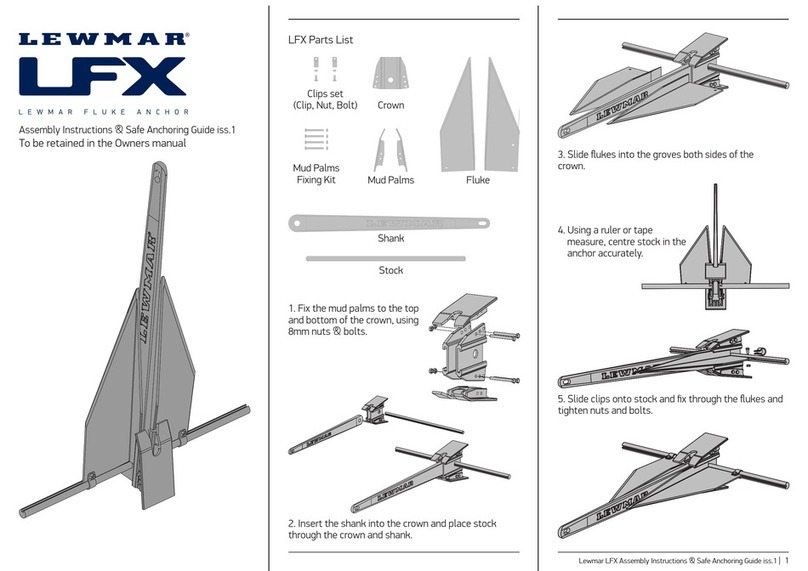
Flush Hatch Fitting & Adjustment Instructions ref B5978 iss.6 | 2
The locking ventilation position is used by closing the handles into the catch block center slot.
Care should be taken not to stand on or load the hatch lid in this position, as damage could occur
to the handle or catch block.
Always wash the hatch with soap, water and a soft cloth. Never use abrasive or solvent cleaners on the
acrylic lid, as this may at a later date damage the acrylic.
3G hatches are intended predominantly for light and ventilation. Sizes 44, 54 and above are also
suitable for emergency access/evacuation, in accordance with ISO 9094, provided they are tted
with exterior handles. Protect the seal if used as regular access for people, sails or equipment.
To avoid risk of injury care should be taken to keep hands and limbs clear of lever and lid pinch zones while
operating and adjusting the hatch.
User Notes
Position lower frame over hole and drill two xing screw holes in opposite corners. Insert
appropriate stainless steel fasteners (see below).
* Be careful not to damage paint when drilling
* For ideal xing use Silicone or Tef Gel under the screw head
* Be careful when xing screws - Do not DAMAGE paint
Deck type
Wood M5 through bolts or marine grade wood screws.
(Torque to 2.25 - 3.0 Nm)
Standard ply / Marine ply - 3Nm
Hardwood - 2.75Nm
Softwood - 2.25Nm
GRP/Steel/Al Alloy M5 through bolts or machine screws into suitable tapped plates.
(Torque to 3.0 Nm)
Fixing Sizes M5, 10UNC, 2BA, 3/16”, Wood screws (min. length 40mm).
Hinge Fixings M6 or 1/4” through bolts only.
Drill remainder of holes and fasten down from the center working out to the edges. Clean off surplus
sealant.
Through bolts should be used where xings pass through lower hinges (M6 or 1/4” only).
Once installed check again for correct operation of the hatch lid, i.e. closing/locking, even pressure
of seal etc.
In the case of 3G hatches, suitable protection should be given to the lower frame seal for the
duration of the boat construction. Failure to do so may result in damage occurring to the seal
from hoses, cables etc. being dragged over the seal surface.

























